
7 Lemon Tree Leaf Diseases and How to Manage Them
Share
Lemon trees are cherished for their vibrant fruit and fragrant foliage, yet they often face a variety of leaf diseases that can threaten their health and productivity. Understanding these common ailments is essential for any gardener aiming to cultivate a thriving citrus garden. This article explores seven prevalent lemon tree leaf diseases, providing actionable insights on identification, management strategies, and preventive measures.
How can gardeners effectively safeguard their lemon trees against these persistent threats while ensuring a bountiful harvest?
Want to grow lemon trees in your garden?
Explore Lemons & Limes Collection at Everglades Farm - shipped directly from Florida.
1. Everglades Farm: Source Healthy Lemon Trees for Disease Prevention
Everglades Farm is dedicated to providing premium citrus plants cultivated under optimal conditions, ensuring that clients receive robust specimens that exhibit greater resistance to diseases. By sourcing citrus plants from a reputable nursery like Everglades Farm, you start with certified disease-free specimens, which is essential for successful gardening. Our Fast-Growing Plants collection features vibrant, high-yield specimens that not only enhance your garden but also increase your chances of a fruitful harvest. These plants are nurtured in well-draining soil and receive appropriate care, including deep watering every 1-2 weeks, establishing a strong foundation for a thriving citrus garden.
This proactive approach significantly reduces the risk of disease outbreaks, allowing gardeners to reap the rewards of their efforts with confidence. As horticulturists emphasize, the importance of disease-free plants cannot be overstated; they are vital for maintaining the health and productivity of your citrus plants. By selecting Everglades Farm, you are making an investment in the long-term success of your home gardening projects. Moreover, ensuring proper spacing of 10-15 feet for standard-sized plants is crucial for their growth and productivity.
To further support your gardening journey, consider utilizing our professional-grade fertilizers, specifically formulated to deliver essential nutrients for optimal growth. Regularly inspect your citrus plants for any signs of lemon tree leaf diseases or pests, and act promptly to safeguard their health.
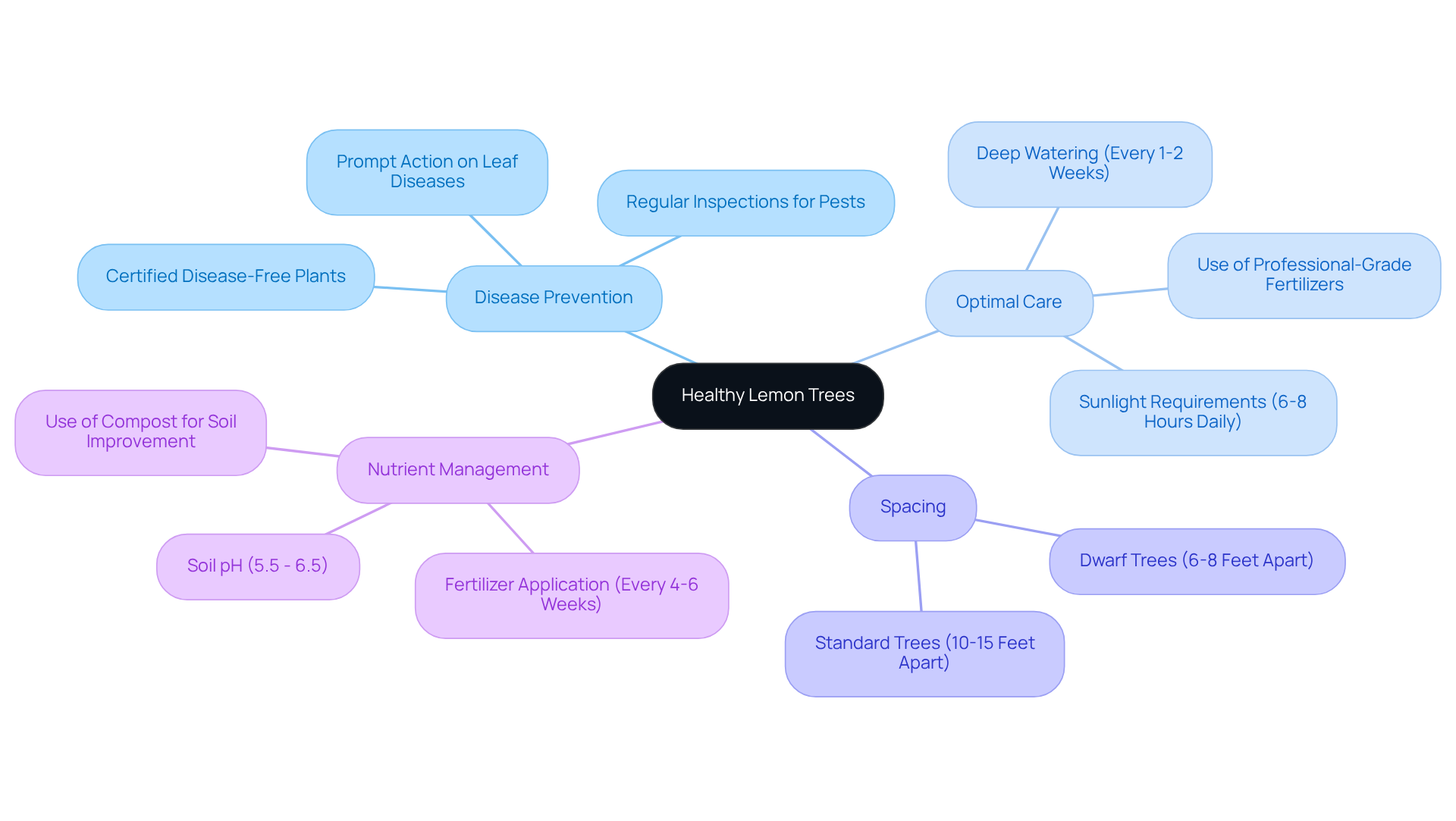
2. Citrus Canker: Recognize Symptoms and Implement Prevention Strategies
Citrus canker, which is one of the lemon tree leaf diseases, is characterized by raised brown lesions on the leaves, stems, and fruit of lemon plants and is caused by the bacterium Xanthomonas citri. Early detection is crucial for effective management. Symptoms of lemon tree leaf diseases often manifest as yellow halos surrounding the lesions, along with premature fruit drop. To control lemon tree leaf diseases effectively, it is essential to ensure proper air circulation around your trees and to avoid overhead watering, as this practice encourages a moist environment that promotes infection.
Regular inspections play a vital role in managing lemon tree leaf diseases; any infected parts should be removed immediately to prevent their further spread. Research indicates that the application of copper-based fungicides can significantly reduce the incidence of lemon tree leaf diseases such as citrus canker. Additionally, integrated pest management strategies have proven effective in managing lemon tree leaf diseases, demonstrating a reduction in illness rates by over 60%. Experts emphasize the importance of rigorous sanitation methods—such as disinfecting equipment and isolating new plants—to safeguard your garden from lemon tree leaf diseases, which are highly transmissible.
As agricultural specialist Huan Song notes, "Citrus canker is a highly contagious plant disease that can lead to significant economic losses for citrus producers." Implementing these strategies not only protects your lemon trees from lemon tree leaf diseases but also enhances the overall health of your garden.
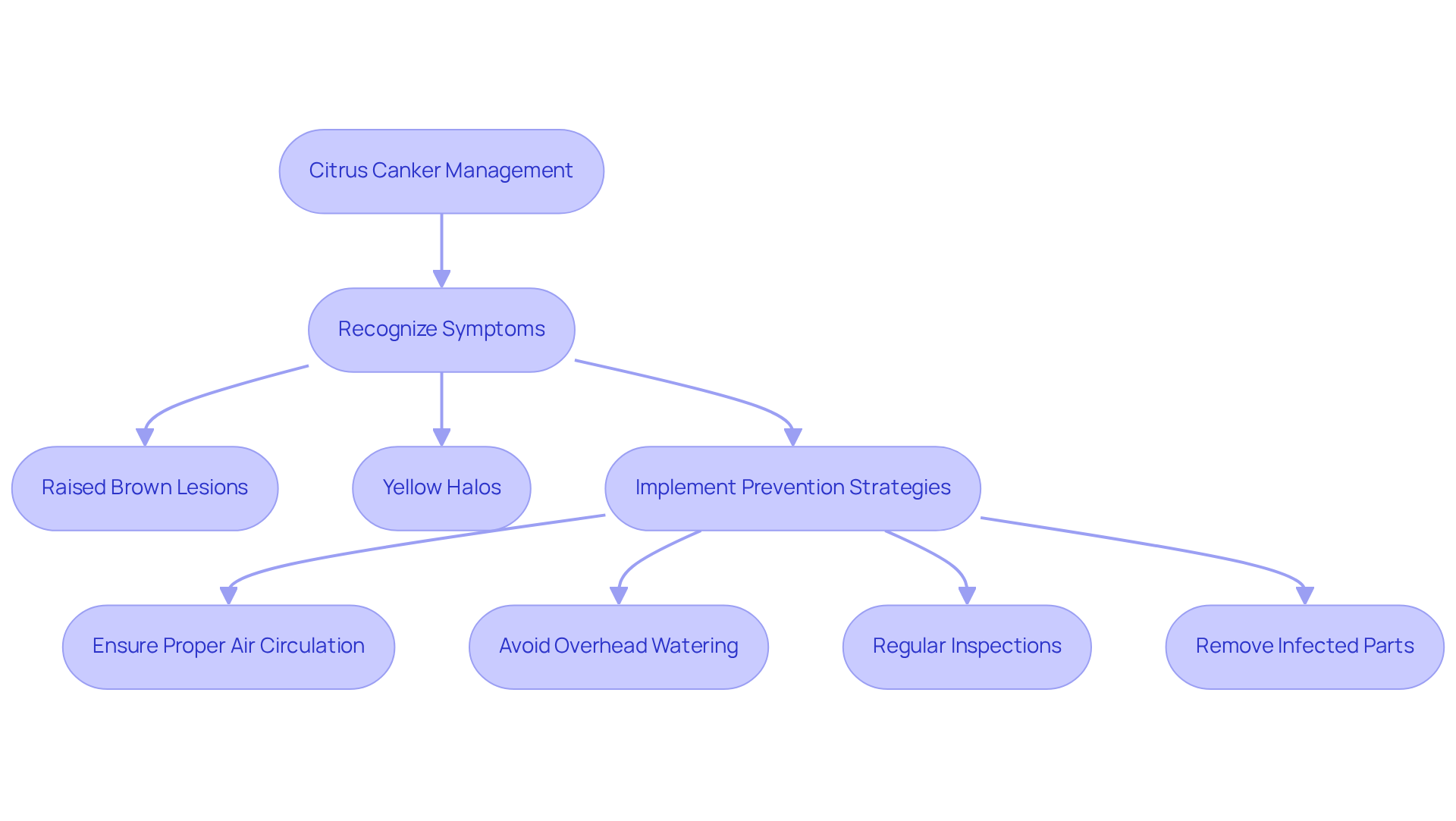
3. Sooty Mold: Identify and Control This Common Lemon Tree Disease
Sooty mold appears as a black, powdery layer on foliage and stems, primarily caused by honeydew excretions from sap-feeding insects like aphids. To effectively control sooty mold, it is essential to first manage the insect populations using insecticidal soap or neem oil. Additionally, consistently cleansing the foliage with a gentle soap mixture will help eliminate the mold. Furthermore, maintaining good plant health through proper watering and fertilization is crucial, as it enables your lemon plants to resist lemon tree leaf diseases associated with this fungal growth.
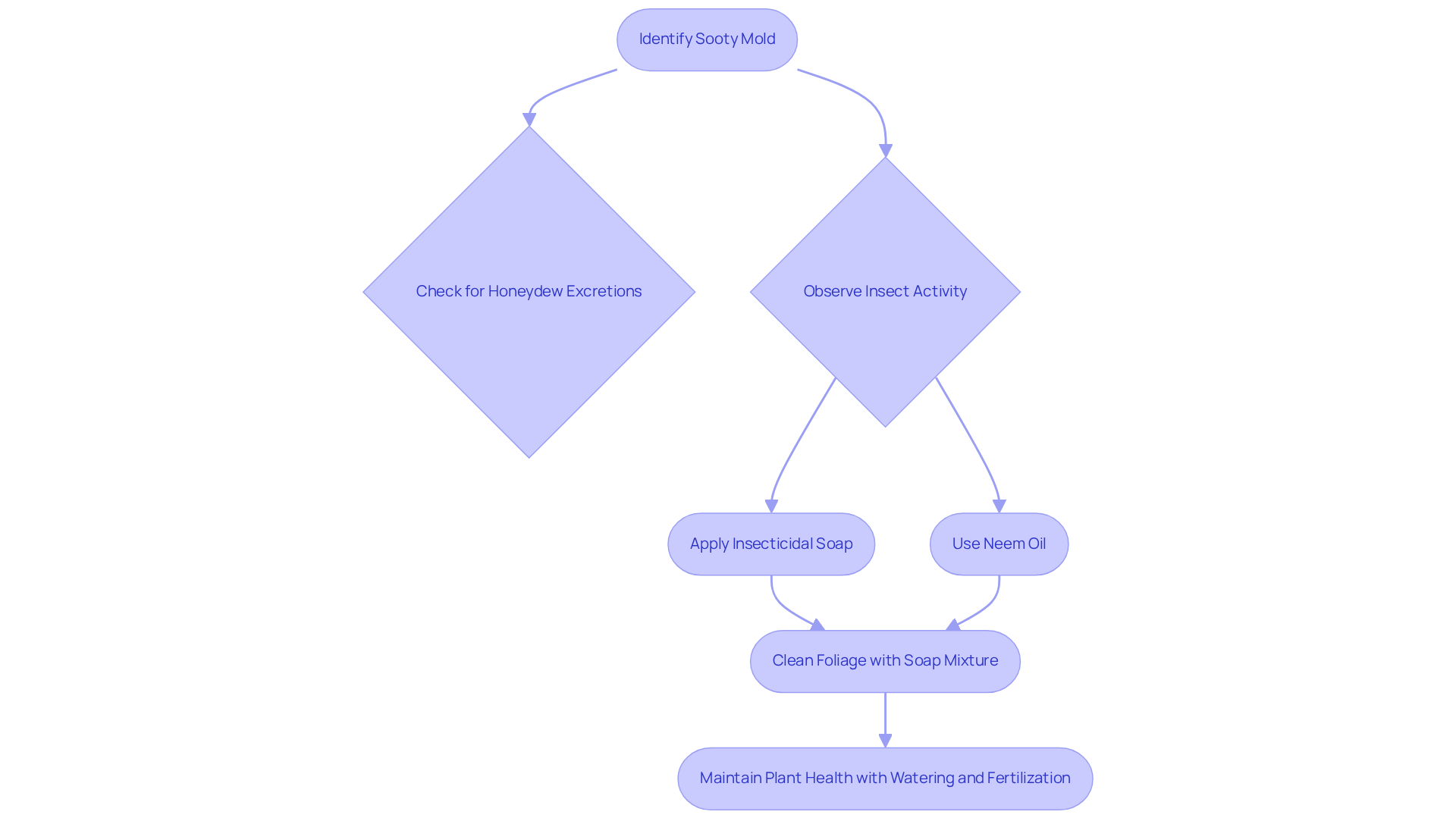
4. Botrytis Blight: Symptoms and Treatment for Lemon Trees
Botrytis blight manifests as grayish-brown, fuzzy mold on leaves and fruit, typically thriving in cool, damp conditions. To combat this issue, it is essential to enhance airflow around your plants by trimming overcrowded branches.
- Remove any infected plant material immediately to prevent the spread of the fungus; ensure that infected plants are discarded rather than composted to avert future outbreaks.
- Additionally, applying fungicides before wet weather can effectively protect your lemon trees from botrytis blight and other lemon tree leaf diseases, as preventing the onset of lemon tree leaf diseases is more cost-effective than treating them after symptoms have appeared.
- Furthermore, ensure adequate air circulation by watering directly onto the soil and avoiding wetting the foliage, which can significantly reduce water availability and hinder botrytis germination.
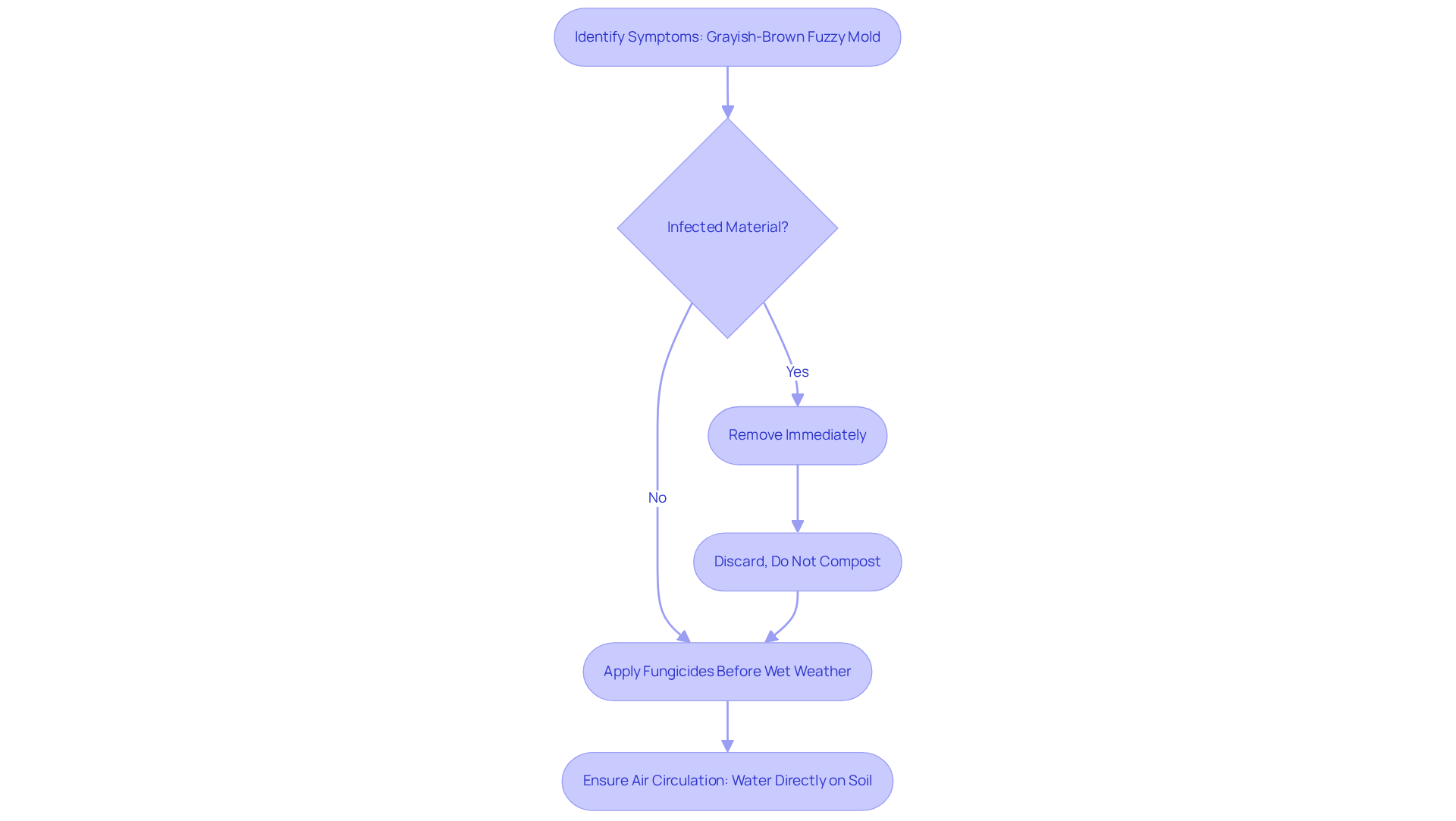
5. Anthracnose: Identify and Manage This Leaf Disease in Lemon Trees
Anthracnose, a type of lemon tree leaf diseases, is commonly identified by dark, sunken spots on foliage and fruit. To effectively control this disease, it is crucial to ensure proper spacing between plants, which enhances airflow and decreases humidity. Additionally, consistently clearing away fallen foliage and debris from around the base of the tree can significantly reduce the presence of fungal spores. Furthermore, applying a protective fungicide during wet periods serves as a preventive measure against lemon tree leaf diseases, including anthracnose infections.
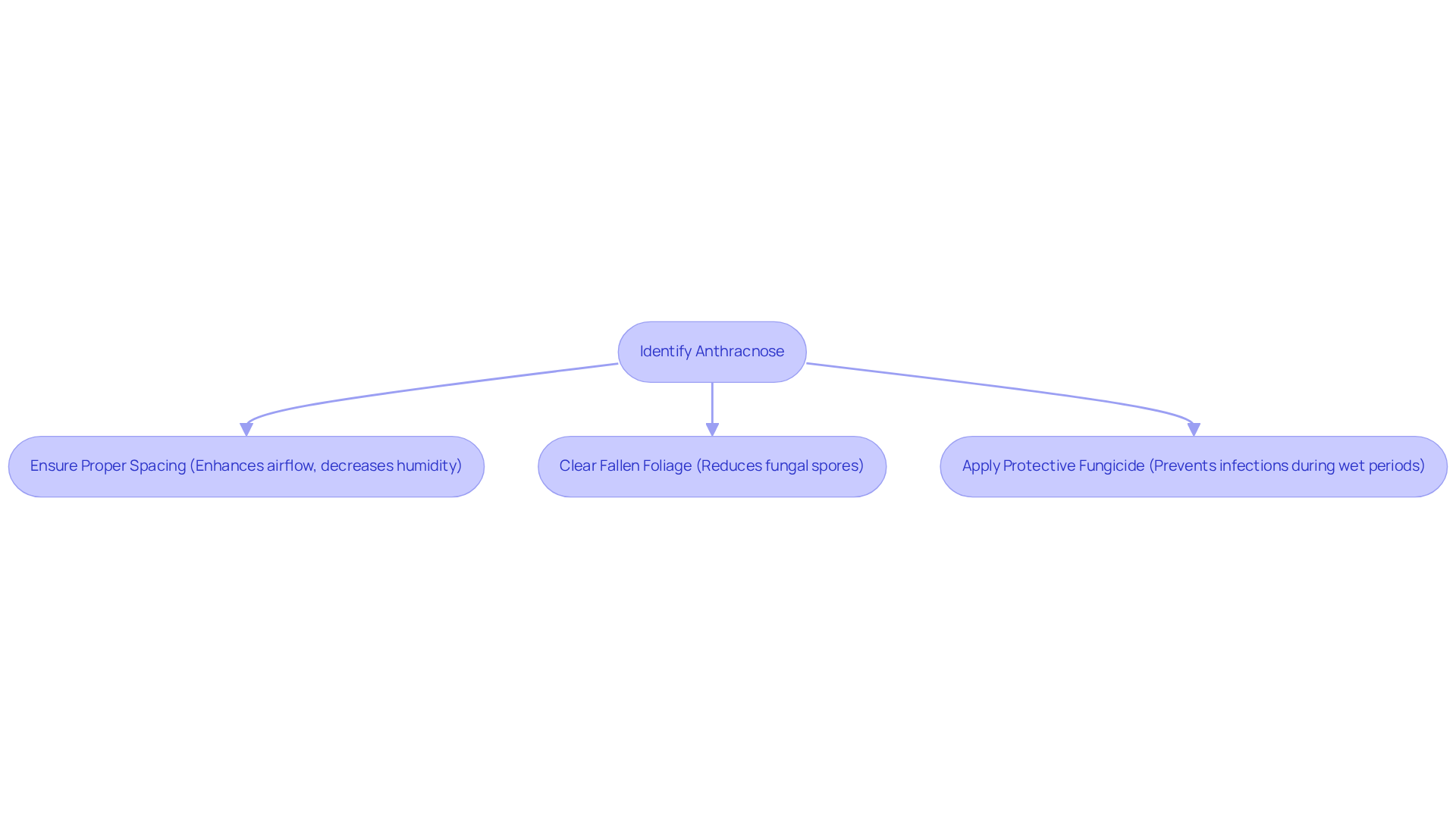
6. Lemon Scab: Recognize and Treat This Leaf Disease
Lemon tree leaf diseases, including lemon scab, manifest as raised, corky lesions on both leaves and fruit, presenting a challenge for gardeners. To effectively manage this condition, it is essential to:
- Apply copper fungicides before the flowering stage.
- Continue treatments at regular intervals throughout the growing season.
In addition, ensuring that your plants are well-nourished and not under stress is crucial, as healthy specimens exhibit greater resilience to lemon tree leaf diseases like citrus scab.
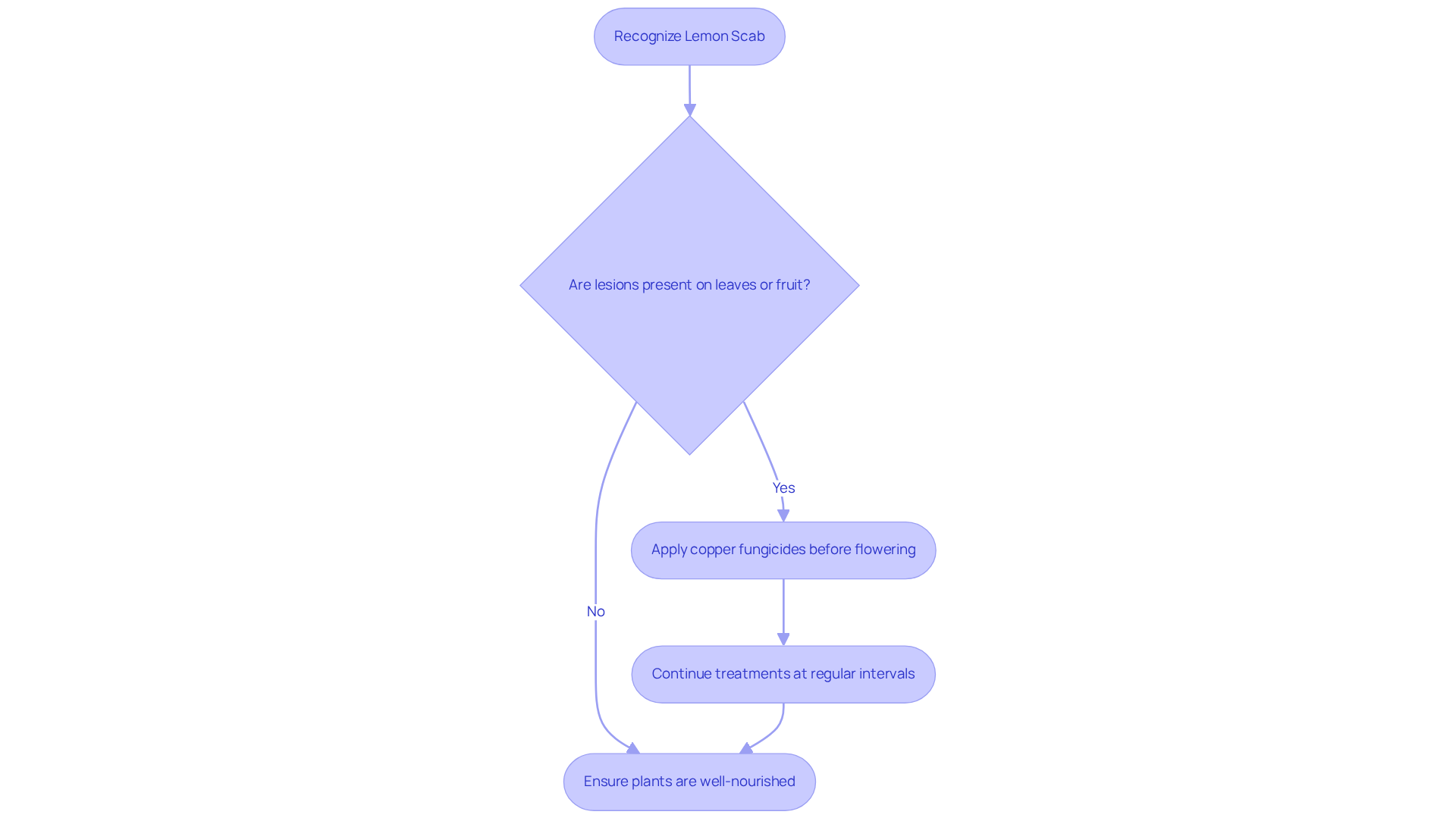
7. Chlorosis: Identify Causes and Remedies for Yellowing Lemon Tree Leaves
Chlorosis is a condition characterized by yellowing foliage, primarily caused by nutrient deficiencies, particularly nitrogen and iron. To effectively address chlorosis, conducting a soil test to assess nutrient levels is essential. Research indicates that many citrus cultivators neglect soil testing, leading to poor management of nutrient deficiencies. As Barbara Gillette, a Master Gardener, notes, "This condition is caused by a deficiency of chlorophyll, resulting in light green or yellow foliage." Based on the soil test results, applying a balanced fertilizer or specific micronutrients can help rectify any identified deficiencies.
Furthermore, ensuring that citrus plants receive adequate water without causing waterlogging is crucial. Excess moisture can impede nutrient absorption and exacerbate chlorosis. It's advisable to allow the top 2 to 3 inches of soil to dry out between waterings. Consistent observation and appropriate maintenance can significantly enhance the health and vigor of your citrus plants, preventing further yellowing of foliage.
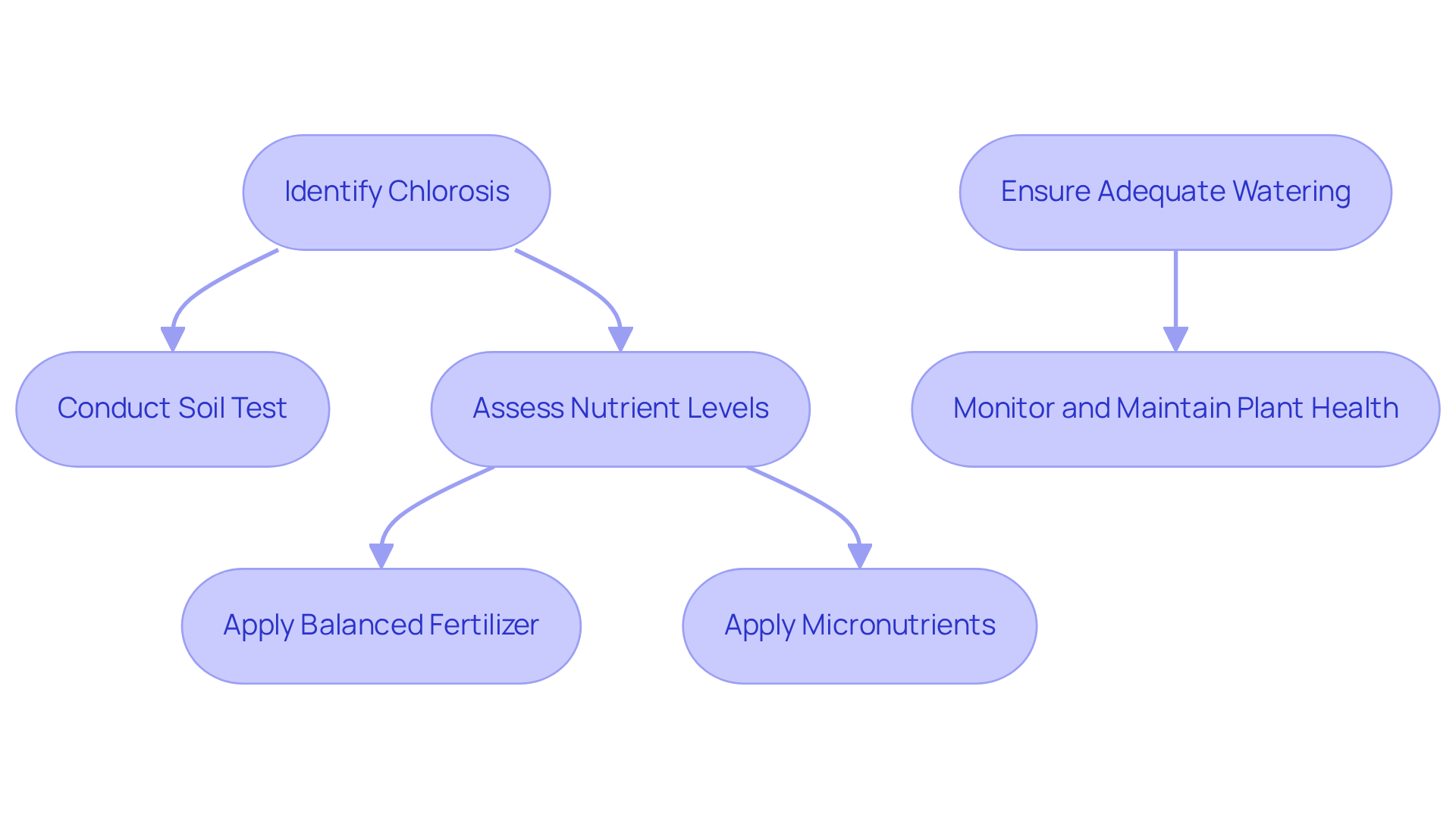
8. Citrus Leaf Miner: Identify and Control This Pest on Lemon Trees
Citrus miners are well-known for creating serpentine tunnels in lemon plant foliage, which leads to distortion and a decrease in photosynthesis. To effectively manage this pest, it is essential to apply horticultural oils or neem oil on new growth, ensuring that the sprays are thoroughly applied to both the upper and lower sides of the foliage, as these treatments can suffocate the larvae.
Routine evaluations of your plants are crucial; promptly remove severely infested foliage to mitigate damage. Additionally, maintain the overall health of your lemon trees through appropriate watering and the application of high-quality fertilizers, which enhances their resilience and ability to recover from miner infestations.
Spraying should begin when the summer flush starts and cease once the foliage hardens or exceeds 40 mm in length. Incorporating natural predators, such as parasitic wasps and lady beetles, can also assist in controlling leaf miner populations. By implementing these strategies, you not only protect your plants but also promote a thriving garden environment.
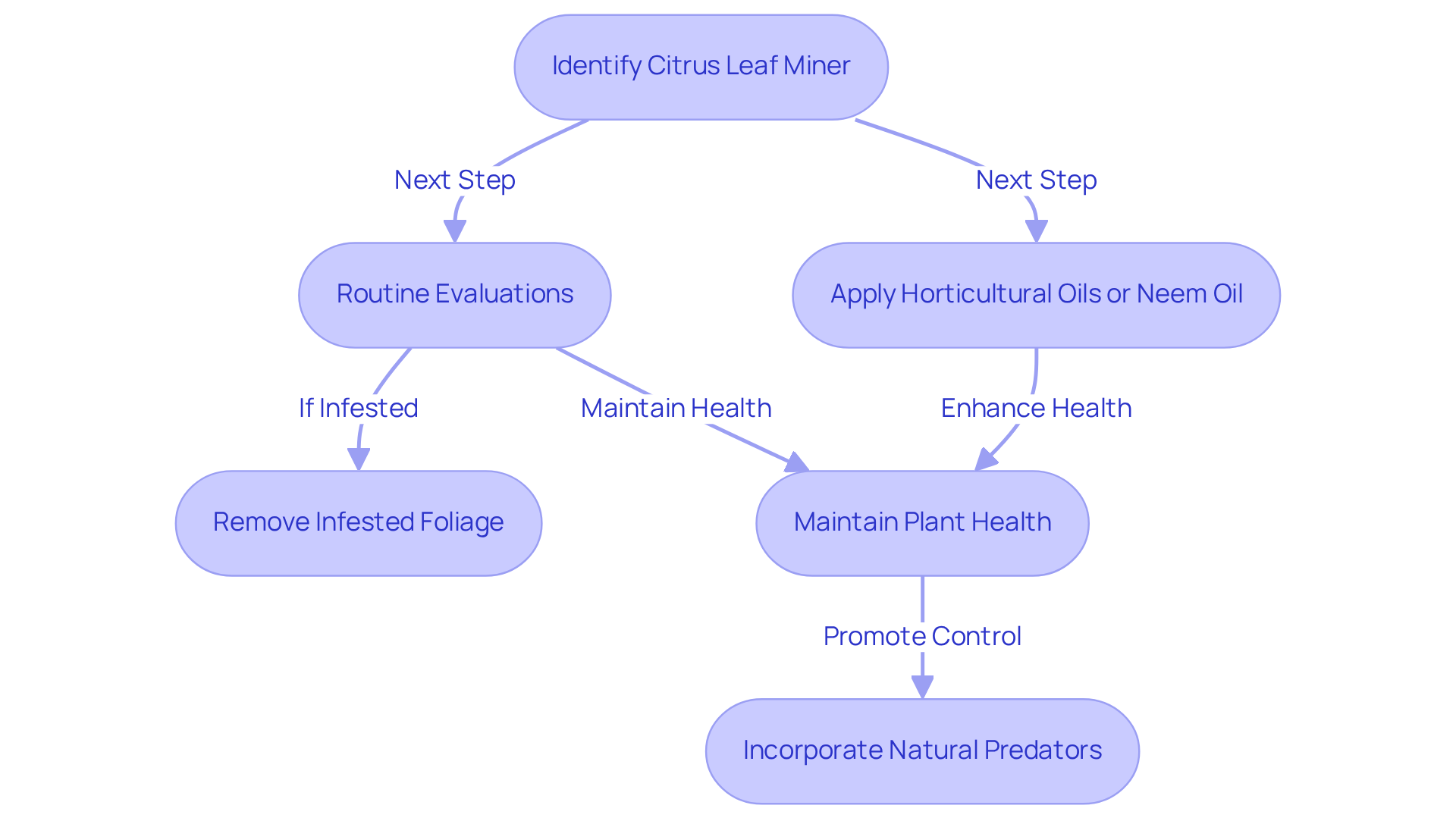
9. Irrigation Practices: Prevent Lemon Tree Diseases Through Proper Watering
To effectively prevent lemon tree leaf diseases in lemon plants, it is crucial to establish a consistent irrigation plan. This plan should allow the soil to dry slightly between waterings, promoting strong root development and reducing the risk of shallow root systems that are more susceptible to drought stress.
Thorough irrigation is particularly beneficial as it encourages roots to grow deeper into the soil, enhancing the plant's ability to access moisture and nutrients. It is advisable to avoid overhead watering, as it can increase humidity around the foliage, creating a favorable environment for lemon tree leaf diseases. Instead, implementing drip irrigation systems is highly recommended. These systems deliver water directly to the root zone, ensuring efficient moisture distribution while minimizing water waste.
Approximately 70% of cultivators have opted for drip irrigation due to its effectiveness in maintaining plant health and preventing diseases. As irrigation experts emphasize, "Proper irrigation planning is essential for maintaining healthy citrus plants and maximizing their growth potential."
By establishing a watering schedule that includes thorough irrigation every 7-10 days in dry conditions, cultivators can significantly enhance the vitality of citrus plants and reduce the risk of lemon tree leaf diseases.
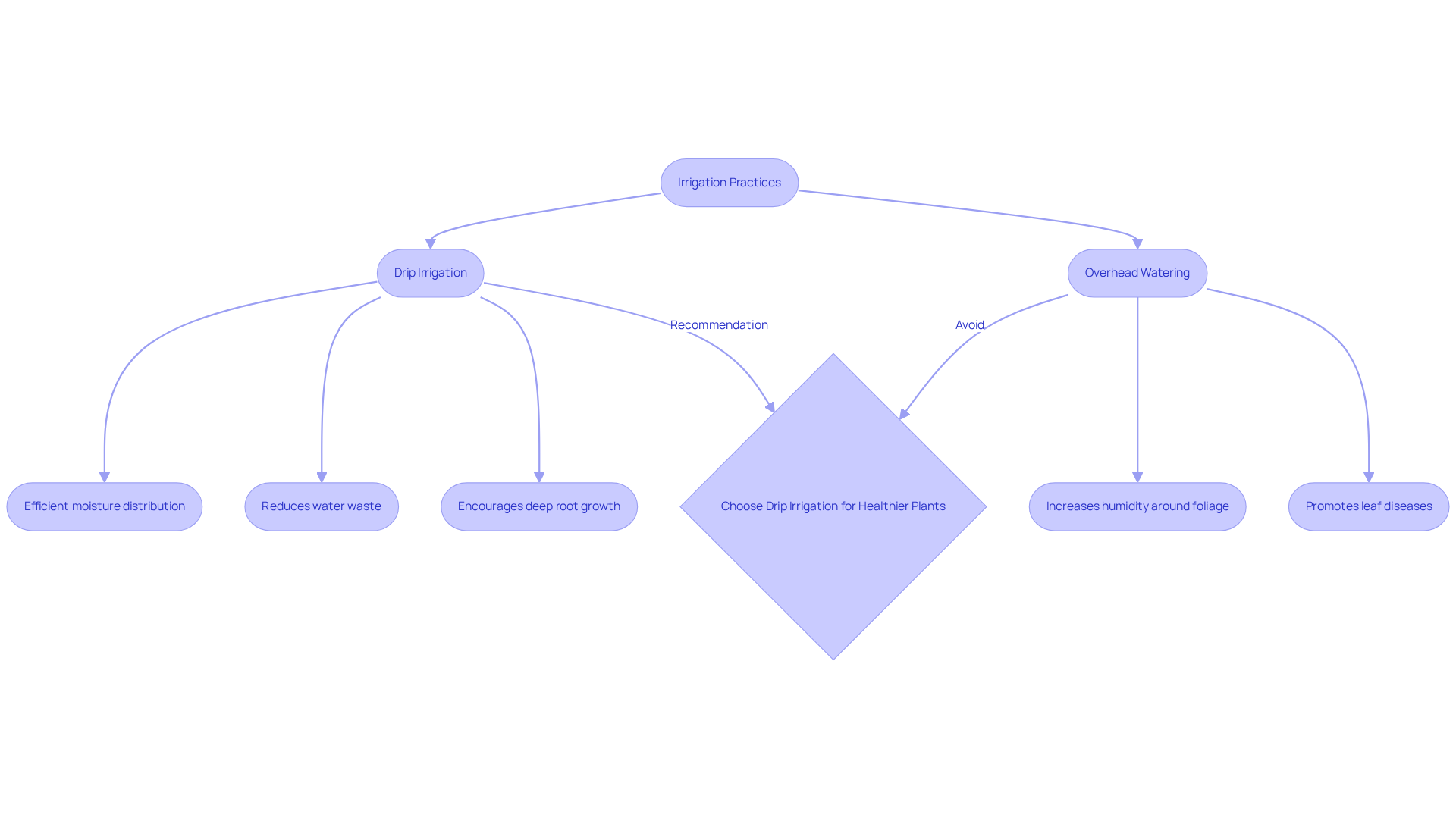
10. Comprehensive Care: Strategies for Healthy Lemon Trees and Disease Prevention
To sustain the vitality of your lemon plants, adopting a holistic care strategy is essential. This includes:
- Regular pruning
- Appropriate fertilization
- Effective pest management
Consistent monitoring for signs of lemon tree leaf diseases or pest infestations is crucial; prompt action can prevent minor issues from escalating. Additionally, implementing crop rotation and companion planting enhances soil health and promotes biodiversity, which is vital for a resilient garden ecosystem. Routine soil analysis is advised to ensure ideal nutrient levels, and selecting disease-resistant varieties when planting new plants can significantly reduce the likelihood of future issues.
Furthermore, utilizing organic pest management techniques, such as those used for controlling passion vine hoppers, can be advantageous in protecting your citrus plants from similar pests. According to horticulturists, maintaining a vigilant monitoring routine is key to early detection and management of lemon tree leaf diseases, ultimately safeguarding the health of your lemon trees. By following these practices, you can enhance the resilience and productivity of your lemon plants, ensuring a thriving garden.
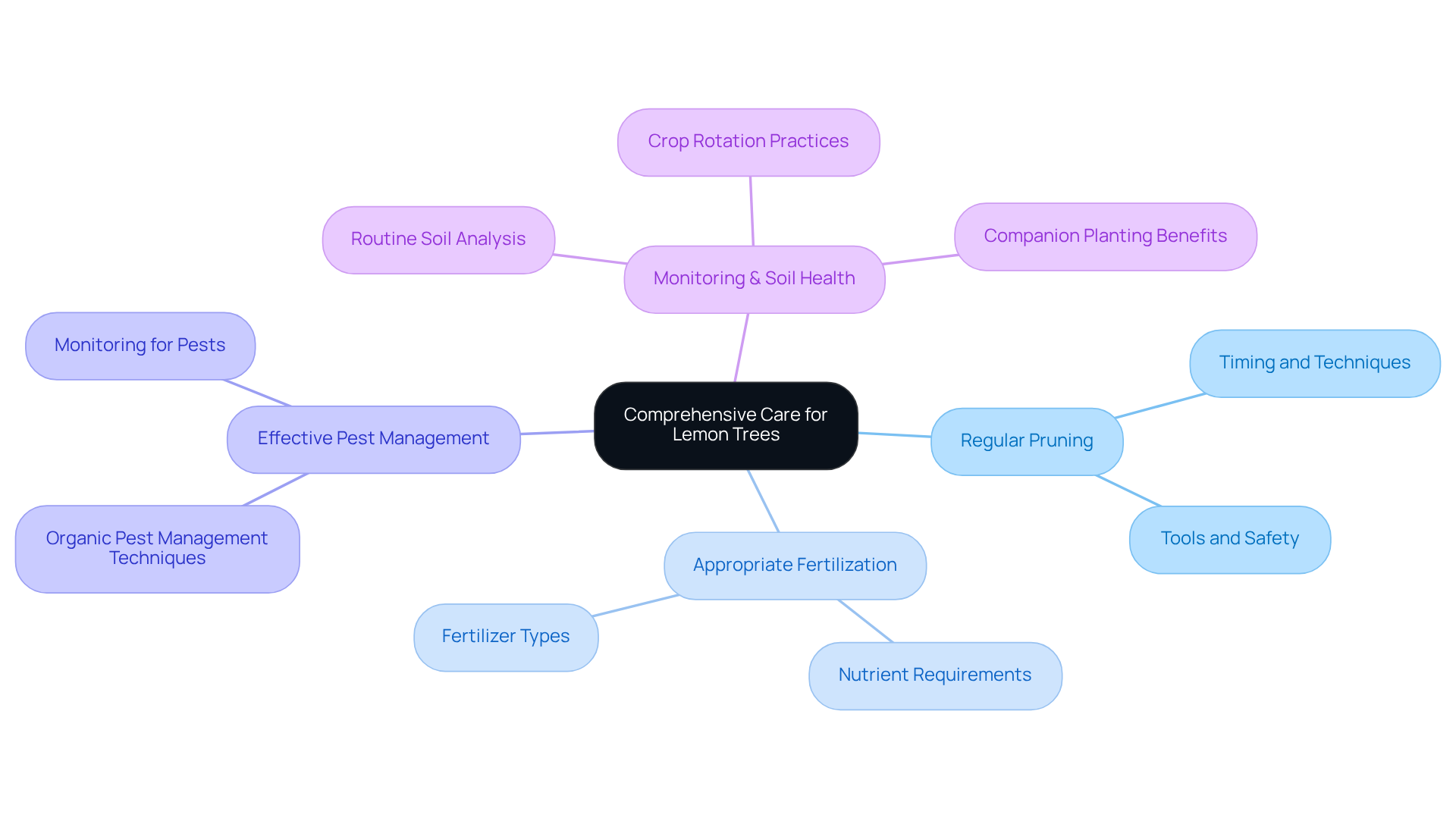
Conclusion
Ensuring the health of lemon trees is paramount for any gardener aiming for a fruitful harvest. This article outlines critical insights into the various leaf diseases that can afflict these trees, such as:
- Citrus canker
- Sooty mold
- Chlorosis
While providing practical management strategies to combat these issues, by understanding the symptoms and implementing effective prevention techniques, gardeners can significantly enhance the resilience and productivity of their lemon plants.
Key strategies discussed include:
- Sourcing disease-free plants from reputable nurseries like Everglades Farm
- Maintaining proper irrigation practices
- Applying timely treatments such as fungicides and insecticides
Regular monitoring for signs of disease and pest infestations, along with routine soil testing, are essential practices that contribute to the overall vitality of lemon trees. By adopting a holistic care approach, including proper spacing, pruning, and nutrient management, gardeners can create an environment that minimizes the risk of disease outbreaks.
Ultimately, the journey to thriving lemon trees begins with informed choices and diligent care. By prioritizing disease prevention and implementing the strategies outlined, gardeners not only protect their plants but also foster a flourishing garden ecosystem. Embrace these practices to ensure your lemon trees thrive, yielding abundant fruit and contributing to a sustainable gardening experience.
🍋 Cultivate Luscious Lemon Trees with Expert Care!
Start your journey to a thriving garden today with Everglades Farm’s premium plants and tips.
🍋 Explore Lemon & Lime Trees Collection
🍋 Explore Citrus Trees Collection
Frequently Asked Questions
What is Everglades Farm known for?
Everglades Farm specializes in providing premium citrus plants that are cultivated under optimal conditions, ensuring robust specimens with greater resistance to diseases.
Why is it important to source citrus plants from a reputable nursery like Everglades Farm?
Sourcing from a reputable nursery ensures that you receive certified disease-free specimens, which is essential for successful gardening and maintaining the health and productivity of your citrus plants.
What care practices are recommended for growing citrus plants?
Citrus plants should be nurtured in well-draining soil, receive deep watering every 1-2 weeks, and have proper spacing of 10-15 feet for standard-sized plants to establish a strong foundation for growth.
How can gardeners reduce the risk of disease outbreaks in citrus plants?
By starting with disease-free plants, ensuring proper care, and maintaining good air circulation around the trees while avoiding overhead watering, gardeners can significantly reduce the risk of disease outbreaks.
What is citrus canker and how can it be recognized?
Citrus canker is a lemon tree leaf disease caused by the bacterium Xanthomonas citri, characterized by raised brown lesions on the leaves, stems, and fruit, often accompanied by yellow halos and premature fruit drop.
What strategies can be used to manage lemon tree leaf diseases like citrus canker?
Effective management includes ensuring proper air circulation, avoiding overhead watering, conducting regular inspections, removing infected parts immediately, and applying copper-based fungicides.
What role does sanitation play in preventing lemon tree leaf diseases?
Rigorous sanitation methods, such as disinfecting equipment and isolating new plants, are crucial for preventing the spread of highly transmissible lemon tree leaf diseases.
What is sooty mold and what causes it?
Sooty mold appears as a black, powdery layer on foliage and stems, primarily caused by honeydew excretions from sap-feeding insects like aphids.
How can sooty mold be controlled?
Control measures include managing insect populations with insecticidal soap or neem oil, cleansing the foliage with a gentle soap mixture, and maintaining good plant health through proper watering and fertilization.


